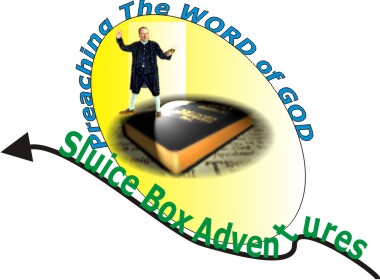Sluice Box Adventures
Believing Bible Study in the 21st century
End Of Age Messages
Anyone who can read and then use the scripture to judge the things of the world can easily discern that the Babylonian whore of Revelation 17-18 is a spiritual picture of the Roman Catholic Church.
King James Bible Study ... learn The Bible ... receive Help in the time of need!
The Whore's Sorceries
Daryl R. Coats
"Looking for that blessed hope," (Titus 2:11-14)
 "... by thy sorceries were all nations deceived" (Revelation
18:23).
"... by thy sorceries were all nations deceived" (Revelation
18:23).Anyone who can read and then use the scripture to judge the things of the world can easily discern that the Babylonian whore of Revelation 17-18 is a spiritual picture of the Roman Catholic Church.
I once heard someone object to this identification, claiming that the whore couldn’t be the Roman church because Revelation 18:23 says that she "deceived ... the nations" and "the great men of the earth" by her "sorceries." The Roman church, this person maintained, did not engage in sorcery.
It does not take a specialized knowledge of the occult to see the faultiness of this person’s objection. The following occultic practices and objects are all part of Romanism.
Necromancy (communion with the dead for the purpose of changing things): Prayers to dead saints qualify as necromancy. So, too, does the practice of keeping parts of dead bodies ("relics").
Transmogrification (the process of converting or transforming an object into something else): During the mass, a priest claims the power to convert/transform a wafer and some wine into the actual, literal flesh and blood of Jesus Christ. The words "hocus pocus" (popularly associated with "magic") derive from a Latin phrase used for centuries in the Roman mass: "Hoc est corpus" ("Here is the body").
Talismans (charms that ward off evil and produce extraordinary effects): Crucifixes, holy water, and rosary beads all qualify as talismans.
Mantras (supposedly "sacred" words or phrases repeated/recited as an incantation): The Rosary, the "Pater Noster," the "Hail Mary," and the "Ave Maria" (among others) qualify as mantras/incantations.
Incantations (verbal charms or spells used as part of a magic ritual): Almost any Catholic ritual (ritual of blessing or of exorcism, for example) or service is composed primarily of a priest reciting incantations. Catholic worship is so structured that rarely are prayers offered unless they are written down and included in a missal.
Curses, Candles, and Rituals: The pope claims the ability to curse people and things ("anathematize" them). Candles are lit as part of prayers (spells!) for the dead. In the eyes of the world, Catholicism is most noted for its ritualism.
Notice, too, that Voodoo is nothing but the union of Catholicism and east African paganism; that the design of Tarot cards has been influenced by Romanism; that the highest rate of occult participation in the world is found in Brazil (a predominantly Catholic country); that most occult and spiritist movements in the U.S.A. originated around Los Angeles, California (whose full name, translated into English, is "The City of the Angels of the Queen of Heaven"); and that Halloween ("All Hallows Even"—the night before All Hallows Day) started off as a Catholic observance.
The Roman church does practice sorcery—and uses it to deceive the world. Take away that sorcery and you have no more Roman Catholicism.
The LORD'S Messenger
A Message To The People
“Then spake Haggai the LORD'S messenger in the LORD'S message unto the people, saying, I am with you, saith the LORD.” Haggai 1:13

